Sepiola
Michael Vecchione and Richard E. Young- Sepiola affinis
- Sepiola atlantica Orbigny, 1840
- Sepiola aurantiaca
- Sepiola birostrata
- Sepiola intermedia
- Sepiola knudseni
- Sepiola ligulata
- Sepiola parva
- Sepiola pfefferi?
- Sepiola robusta
- Sepiola rondeleti
- Sepiola rossiaeformis?
- Sepiola steenstrupiana
- Sepiola trirostrata
Introduction
Members of Sepiola are small, mostly less than 25 mm ML.
Brief diagnosis:
A sepiolin ...
- with arm suckers in two series.
- with bean-shaped visceral photophores.
Characteristics
- Arms
- Arm suckers in two series.
- Hectocotylus typically with:
- 3-4 suckers at the base of the hectocotylus (left arm I).
- Stalks of the subsequent 4 suckers form tubercules of the copulatory apparatus which can be transformed into hooks or lobes.
- Distally the arm is thickened and suckers and stalks of the two series are somewhat separated forming a basket; some suckers often enlarged.
- Tentacles
- Tentacular clubs with suckers in 8 or fewer series.
- Head
- Beaks: Descriptions can be found here: Lower beak; upper beak.
- Beaks: Descriptions can be found here: Lower beak; upper beak.
- Mantle
- Anterior margin of ventral mantle with narrow indentation for funnel and adjacent rounded projections.
- Photophores.
- Pair of bean-shaped visceral photophores.
- Gladius
- Gladius present as a distinct rudiment
Comments
These characteristics are from Naef (1921-23). Naef places Inioteuthis as a subgenus of Sepiola.
Distribution
Along the eastern margin of the Atlantic Ocean from Norway to western Africa; along the western margin of the Pacific Ocean from Sakhalin and the South Kuril Islands off Russia, Japan, Philippines and Singapore (Nesis, 1982/87).
References
Naef, A. 1921-1923. Die Cephalopoden. Fauna e Flora del Golfo di Napoli, Monographie 35, Vol I, Parts I and II, Systematik, pp 1-863.
Nesis, K. N. 1982/87. Abridged key to the cephalopod mollusks of the world's ocean. 385+ii pp. Light and Food Industry Publishing House, Moscow. (In Russian.). Translated into English by B. S. Levitov, ed. by L. A. Burgess (1987), Cephalopods of the world. T. F. H. Publications, Neptune City, NJ, 351pp
Title Illustrations

| Scientific Name | Sepiola atlantica |
|---|---|
| Location | Off Cascais, Portugal |
| Specimen Condition | Live Specimen |
| Identified By | Peter Wirtz |
| View | Side |
| Copyright |
© 2007 Peter Wirtz

|
About This Page
Michael Vecchione

National Museum of Natural History, Washington, D. C. , USA
Richard E. Young

University of Hawaii, Honolulu, HI, USA
Page copyright © 2004 Michael Vecchione and Richard E. Young
 Page: Tree of Life
Sepiola .
Authored by
Michael Vecchione and Richard E. Young.
The TEXT of this page is licensed under the
Creative Commons Attribution-NonCommercial License - Version 3.0. Note that images and other media
featured on this page are each governed by their own license, and they may or may not be available
for reuse. Click on an image or a media link to access the media data window, which provides the
relevant licensing information. For the general terms and conditions of ToL material reuse and
redistribution, please see the Tree of Life Copyright
Policies.
Page: Tree of Life
Sepiola .
Authored by
Michael Vecchione and Richard E. Young.
The TEXT of this page is licensed under the
Creative Commons Attribution-NonCommercial License - Version 3.0. Note that images and other media
featured on this page are each governed by their own license, and they may or may not be available
for reuse. Click on an image or a media link to access the media data window, which provides the
relevant licensing information. For the general terms and conditions of ToL material reuse and
redistribution, please see the Tree of Life Copyright
Policies.
- First online 03 September 2004
- Content changed 30 November 2003
Citing this page:
Vecchione, Michael and Richard E. Young. 2003. Sepiola . Version 30 November 2003 (under construction). http://tolweb.org/Sepiola/20038/2003.11.30 in The Tree of Life Web Project, http://tolweb.org/




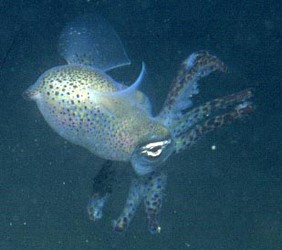
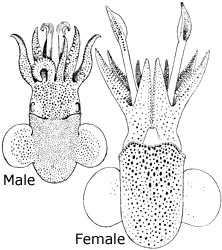
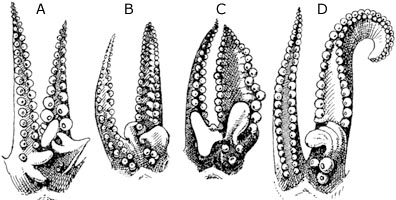
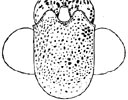
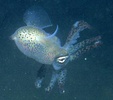



 Go to quick links
Go to quick search
Go to navigation for this section of the ToL site
Go to detailed links for the ToL site
Go to quick links
Go to quick search
Go to navigation for this section of the ToL site
Go to detailed links for the ToL site